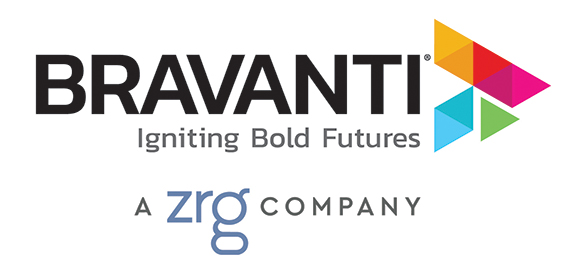By Bravanti
Little more than two months after the World Health Organization classified COVID-19 as a pandemic, the global impacts of the virus continue to beleaguer American organizations, leaving many businesses in the difficult position of downsizing their workforce.
According to the most recent U.S. Jobs Report, the unemployment rate reached 14.7% during the month of April, the largest over-the-month increase since seasonally adjusted data became available in 1948.
While the numbers are admittedly bleak, some see a silver lining in the fact that 18.1 million of the 20.1 million unemployed persons are classified as temporary layoffs versus permanent job losses. This distinction indicates an optimism among employers that the current environment will improve sooner rather than later and that downsizing is a temporary necessity.
However, others don’t believe this optimism has staying power. A recent study by the Becker Friedman Institute for Economics at the University of Chicago predicts that 42% of COVID-19-related downsizing will result in permanent job loss. And as of this writing, with large swaths of the country still on lockdown and no clear path forward, previously optimistic employers are already reversing course and moving forward with permanent workforce reductions. Other employers, like MGM Hotels in Las Vegas, are warning furloughed employees that permanent job cuts could occur in the coming months.
Decisions around if and when to move forward with workforce downsizing are complex and can’t always be avoided, especially in times like today. However, while businesses have a right to conduct workforce modifications in order to save the organization in the long run, they also have a responsibility to their exiting employees—and to their employer reputation—to facilitate a transition that is as seamless and positive as possible.
Why is employee transition important during downsizing?
History is filled with stories of companies paying prolonged penance for poorly managed workforce downsizing and even now, some companies are already seeing backlash for perceived mishandlings of pandemic-related reductions. Suffice it to say that facilitating an equitable, people-centric employee transition process is good for both worker and employer. The economy will eventually bounce back and when it does, your ability to attract high-performing talent will be directly affected by how you manage this transition period.
Consequently, a positive employee transition experience can bolster your employer reputation and help to maintain morale among remaining employees. And, at a time when everything seems important and nothing seems easy, your employer branding should be at the top of your priority list. Below we offer proven tactics employers can use to ease the process for employee transition and while maintaining a strong employer reputation.
Ways to support employee transition during downsizing
1. Have a strategy in place
As with any significant change initiative, a well-thought-out strategy is key. This strategy should include transparent communications, a detailed separation plan, and coaching for people leaders who will support the workforce downsizing.
2. Share important information
Confusion abounds during high-stress times. Sharing proper information with transitioning employees can help to ease anxiety and provide a path forward. Develop a comprehensive information packet with the purpose of answering the question “What next?” Make the information easily accessible online in a transition portal or other hosted environment. Include information on:
- All elements of the severance agreement
- Employee’s rights & options
- Available assistance programs
- Filing for unemployment benefits
- Enrolling for COBRA healthcare instructions (if available)
3. Consider employee transition services
Implementing career transition services is one of the strongest steps you can take in facilitating a positive experience for both employees and employer when downsizing. A reputable outplacement firm can build a customized employee transition program to help you navigate the challenges of workforce reduction with confidence. Custom transition solutions often provide outgoing employees with key support such as:
- Personal career planning
- One-on-one career coaching
- Job search and outplacement services
- Virtual and in-person interview training
- Training and upskilling opportunities
4. Connect exiting employees with organizations that are hiring
While most organizations are at a standstill, others are experiencing significant booms related to the current pandemic. Companies like CVS, Walmart, Amazon, and numerous others are looking to fill hundreds of thousands of positions. While these numbers won’t rectify the vast layoffs, there’s ample opportunity to connect your transitioning employees with these organizations.
If partnering with hiring organizations isn’t possible, consider creating an internal job board or resource center with lists of hiring organizations and links to apply.
Make Downsizing Easier with Employee Transition Support
Workforce downsizing is difficult; that’s a given. Whether furloughing employees or permanently reducing your workforce, there are infinite considerations that factor into the process. The biggest consideration, however, is maintaining the human component: build an employee transition program for people, not numbers. Treat your exiting employees with dignity and respect, while supporting them to the fullest extent possible, and they’re far more likely to be good brand ambassadors now and in the future.
Learn more about our high-touch, high-tech career transition services and contact us today to start planning a positive path forward.
Content Related to How to Provide Employee Transition Support While Downsizing
When “Shelter in Job” Isn’t an Option, Outplacement Services Bridge the Gap
Words Matter: A Leader’s Guide to Communicating Change

